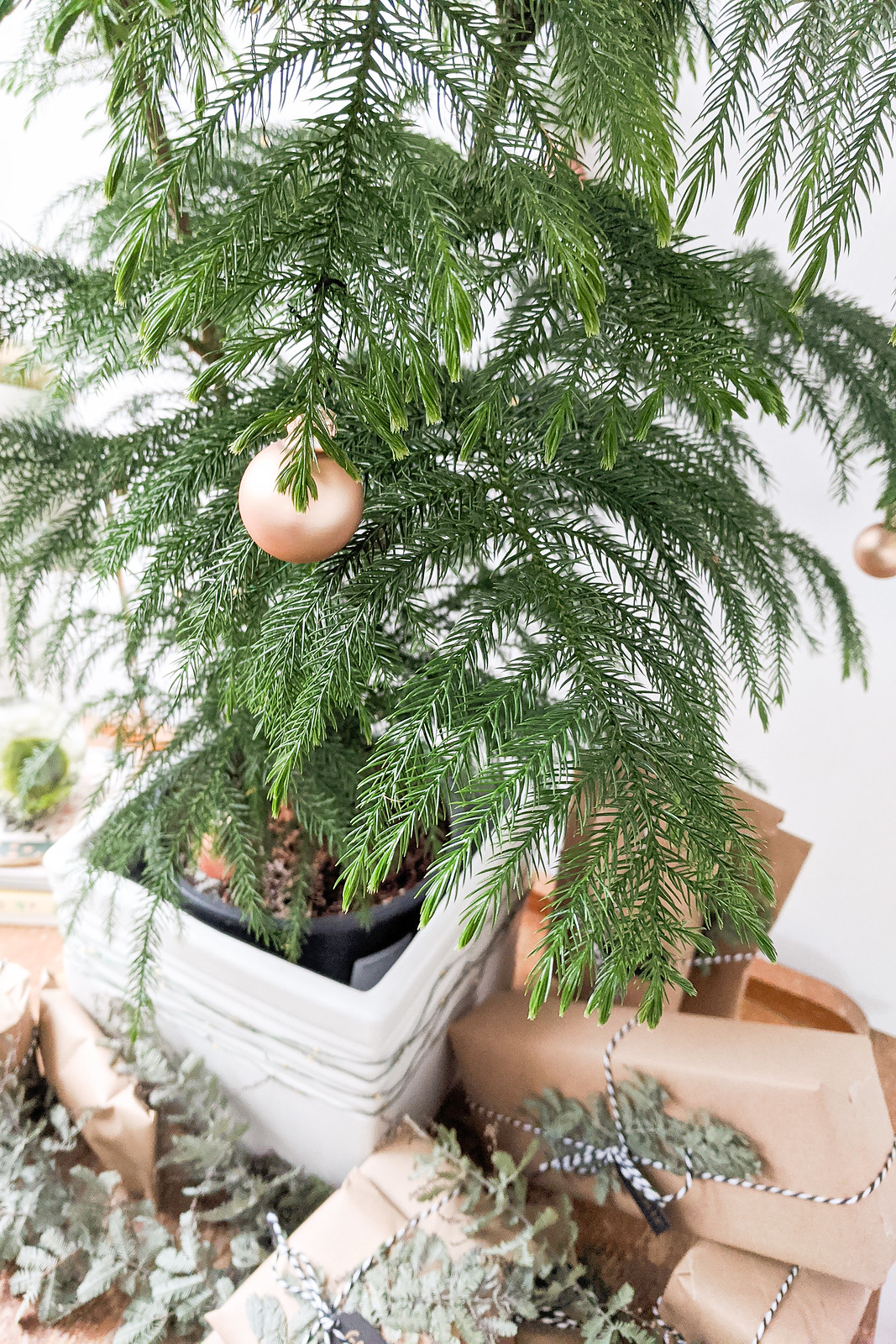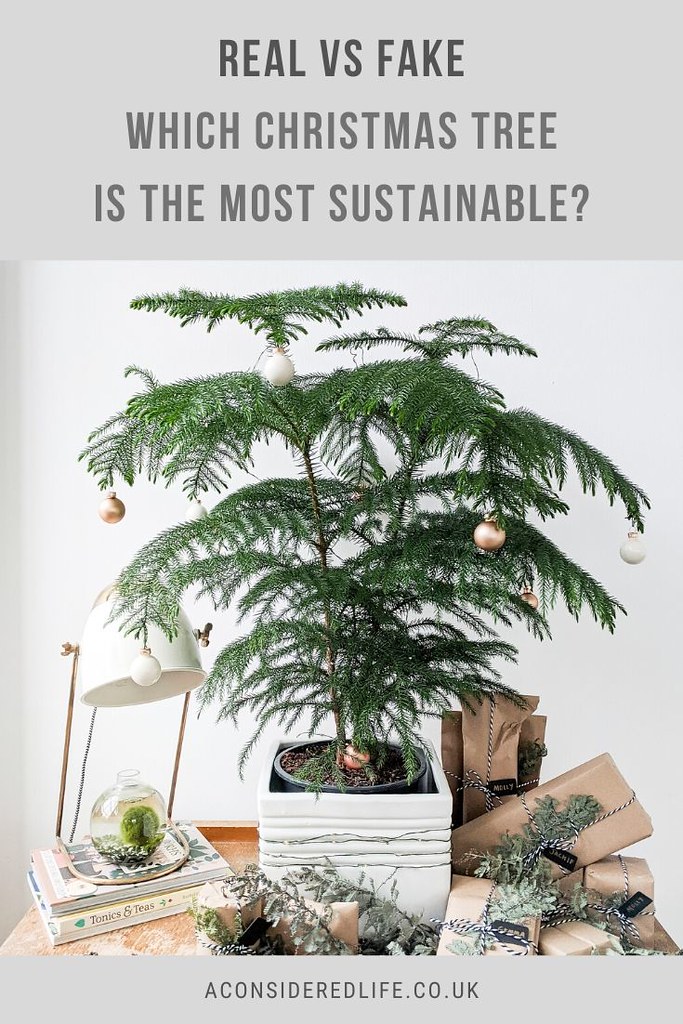
The tricky question: "which is more eco-friendly: a reusable artificial tree or a real tree?" is something I'm always asked around the festive season. Quite honestly, I don't know. It's difficult to figure out the answer. An artificial tree might be made out of ghastly plastic but you buy it once to use year after year, which makes it potentially more environmentally-friendly in the long run. A real tree might be grown responsibly but requires eco-friendly disposal, which isn't always possible. A problem that, as an apartment-dweller, have run into.
If you already own a fake tree, keep using it and when it starts looking tatty, consider your options for tackling future Christmases. If, like me, you've been buying real trees for years but wondering about the sustainability of that habit or you've yet to buy an artificial one and need answers - read on.
A Real Tree
There's something special (and quite peculiar) about bringing a tree indoors to decorate. It feels incredibly festive to me and a tradition that I'm reluctant to let go of. For as long as I can remember, we always had a real fir tree in the house when I was a child and because of that, my partner and I have had a real tree in our apartment for the last few years - until things changed (more on that later).
If you want to stick with tradition there are several options when picking a real tree and a few things to consider to ensure it lasts. You have a choice between a variety of trees, which you can buy at tree farms or nurseries. The traditional option is the fragrant Norway spruce but other varieties, like the Blue Spruce or Nordman fir, have the benefit of being 'non-dropping' and won't litter your floor with as many pines. Make sure you choose a sustainably-grown tree from a responsible tree farm or nursery.
A few tips for making your real tree look its best right up until the big day: keep it outside or in a cold room for as long as possible before bringing it inside. Position it in a spot away from radiators and fires where it'll get natural light. Put the stump in water straightaway or, if it's potted up, give it a good soaking. Firs and spruces like a lot of water and in our central heated homes can dry out easily. Make sure you check and water it everyday.
Tree farms do replant the trees they cut down but a lot of resources and energy are wasted in the process especially when you send your tree to landfill so it's important to deal with your unwanted tree responsibly.
When it's time to retire your tree, there are a few ways to deal with it in an environmentally-friendly way. The best option would be to plant it out in a garden so you can bring it indoors again next year, saving you some money too. If you don't have the space, ask if a friend or family member would like to plant it in their garden.
If you have nowhere to put your Christmas tree after the festive season is over, pick up and drop of services are often available through your local council, organisations, or charities. These services will take your tree and recycle them, for free. Chopping up your tree to burn isn't an advisable way to dispose of it due to the smoke pollution it might cause. It's better to arrange for dispose by your council or housing provider.
A better option for a real tree that doesn't have to be put outside or disposed of each year, is the Norfolk Island Pine. This beautiful tropical tree can be happily kept inside to be decorated during the festive season. They tend not to grow much bigger than 5ft indoors, and the branches are strong enough to support a few seasonal decorations and lightweight LED lights. I purchased my Norkfolk Island Pine from Bakker for the same price I was buying a real tree every year. It looks beautiful in our apartment with or without decorations.

A Reusable Tree
I understand why so many people opt for a reusable or artificial tree. Real trees are messy, they require maintenance to keep them alive, and they can die prematurely leaving a bare sad looking tree on Christmas Day. Not everyone has the space for a permanent tree in their home nor does everyone want one. The next best option is a reusable tree that can be stowed away until Christmas Day.
There are plenty of options if you're looking for a reusable tree from traditional-looking artificial trees to beautifully crafted wooden ones. Options include: reusing an artificial (plastic or otherwise) tree every year, buying a second-hand one, planting a tree in your garden and bringing it indoors for Christmas, or using house plants to decorate. Use whatever you already have but if you are in need of a reusable tree, look for second-hand options before buying new. Artificial plastic trees most often cannot be recycled and end up polluting landfill once it starts looking tatty and you decide to throw it away. So bear that in mind when making a decision. Alternatively, decorate a suitable house plant (make sure it's foliage is strong enough for your decorations) or invest in a Norfolk Island Pine to reuse every year (if you trust yourself to keep it alive that long!)
Whichever option you choose, a reusable tree means storing it once Christmas is over. Unlike a real tree that can be disposed of in an eco-friendly way or even planted in your garden, a reusable tree needs to be boxed up and stored or kept (decoration-free) in your home until the following year; either way requires space you might not have. It can be an effort not worth making when you consider how bulky trees can be and the box of decorations that go along with it.

No Tree At All
If you want to bypass waste altogether, opt for not tree at all. I tried suggesting this option a couple of years ago and got shot down but I'm not mad. I enjoy the peculiarity of decorating a tree indoors and I'm glad we found a solution that saves us money. It's allowed us to keep the festive tradition without the hassle (and guilt) of disposable.
If you are happy to go without, having no tree at all completely skips the difficult question "what is the most sustainable option?" and the hassle of dealing with whatever choice you've made once Christmas is over. There are plenty of ways to decorate with or without a tree.
Eco-Friendly Decorations
A quick note on decorating your Christmas tree. While I secretly love gaudy tinsel and over-the-top ornaments, I believe festive decorations look best when they're kept simple and minimal; a selection of glass baubles, lights, and perhaps a few ornaments. Festive DIYs can help you make a few decorations, like this foraged wreath I made last year. For others you might need to buy, shop second-hand before buying new and opt for plastic-free decorations you'll want to use year after year.
I have a small box of keepsakes that I use as festive decorations. This includes traditional items like baubles and lights, as well as handmade bunting, small gifted ornaments, and souvenirs from travel. Most of them aren't Christmas themed but they're a nice reminder of memories with our loved ones. Not much else other than a handful of glass baubles and LED lights can be used to decorate our Norfolk Pine Tree (the other decorations will be placed around our home) so if you do think more-is-more then a tiny tree might not be the best option for you.

